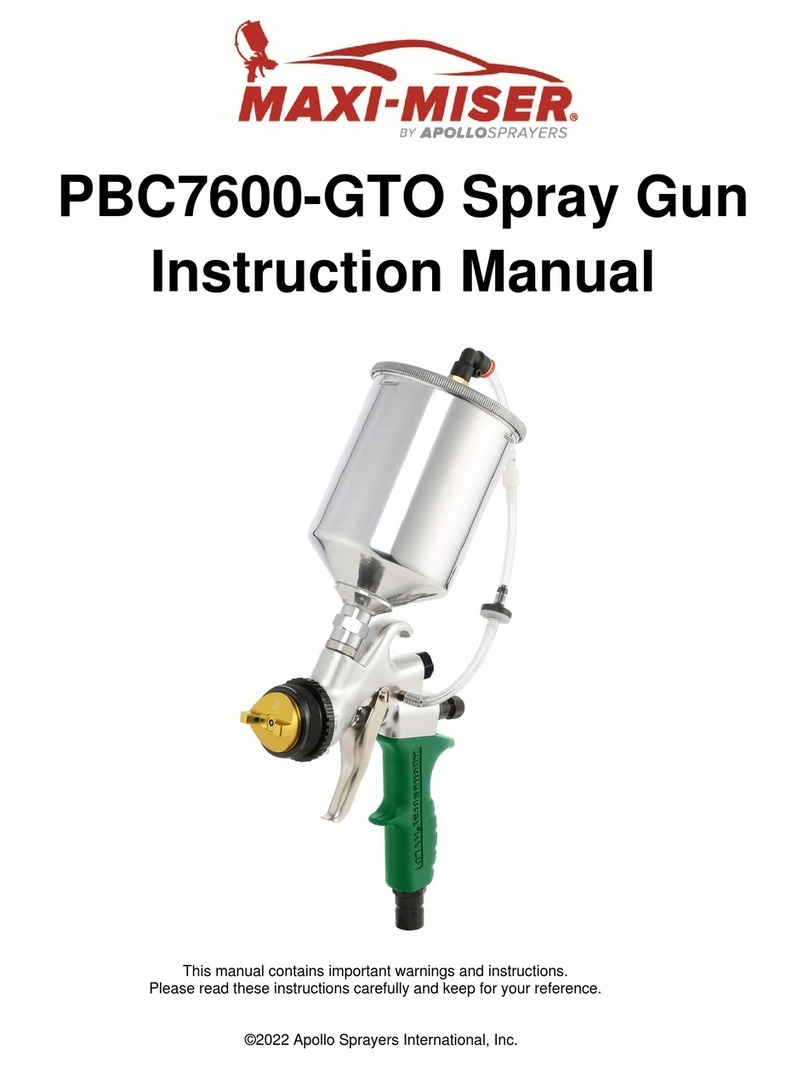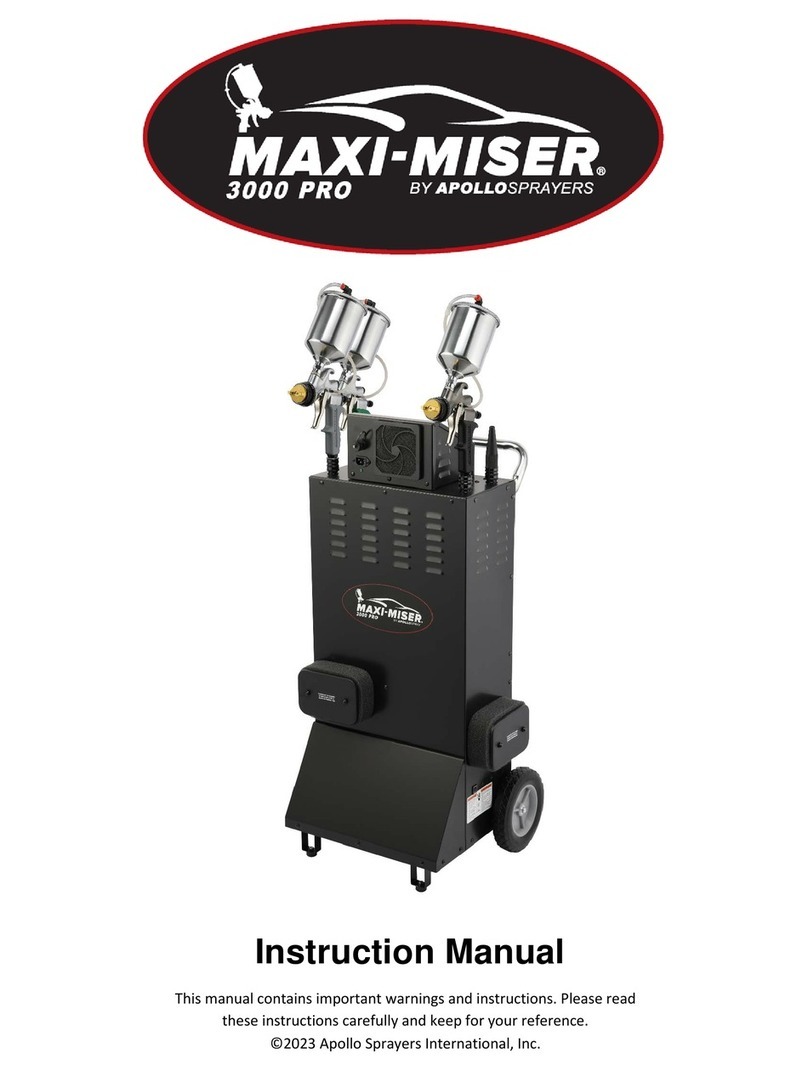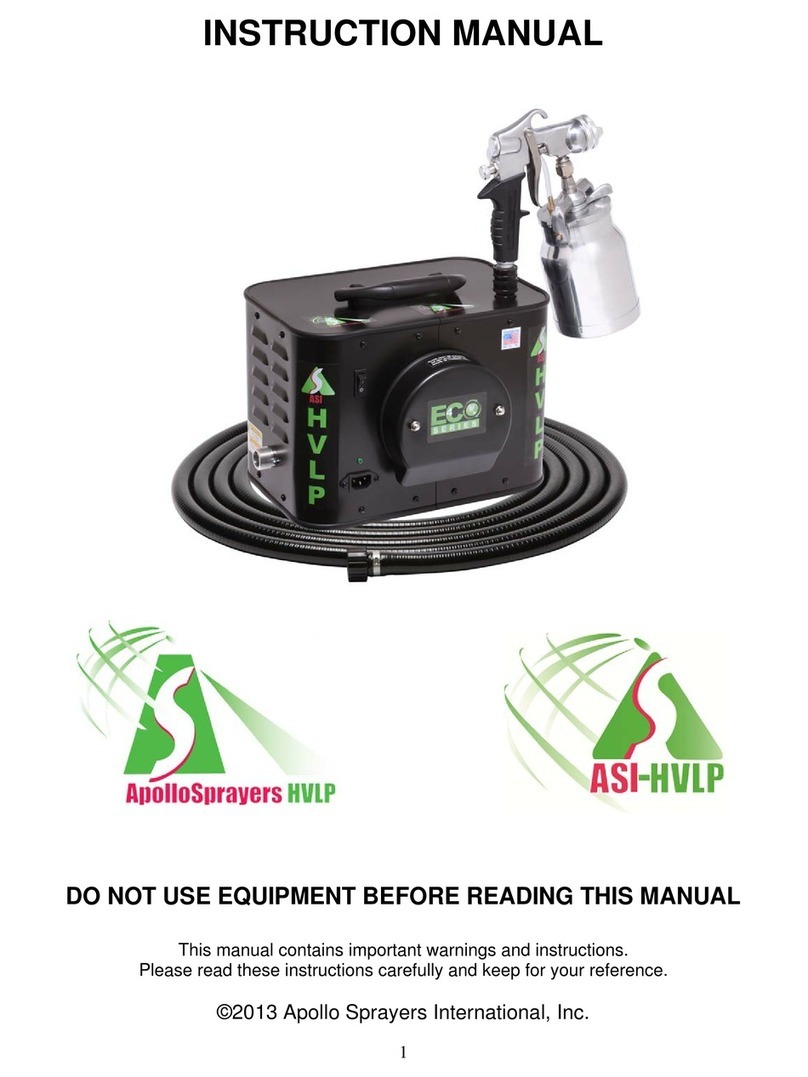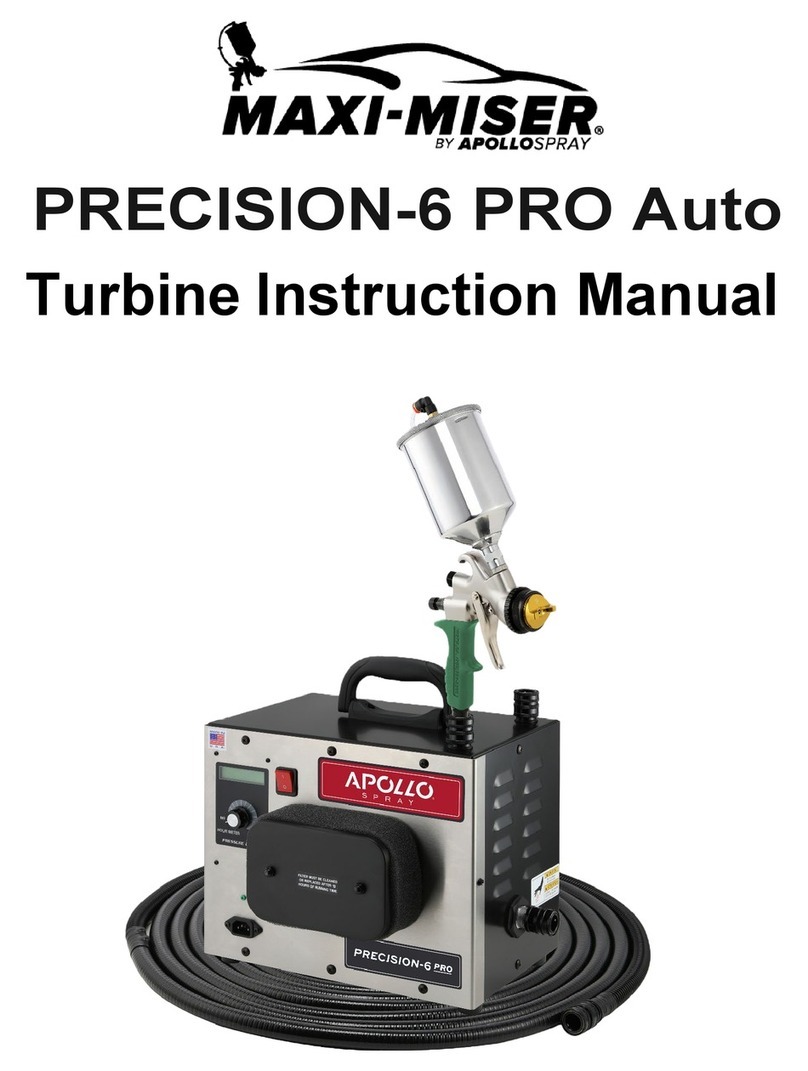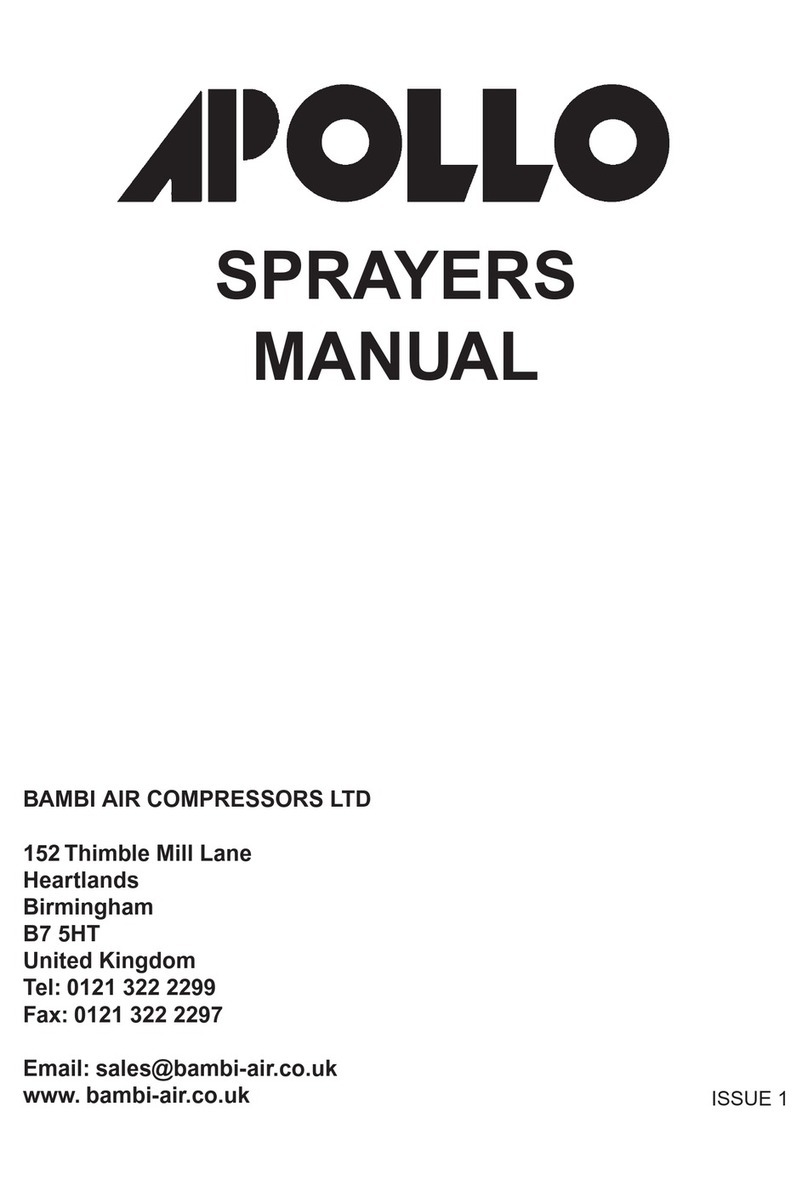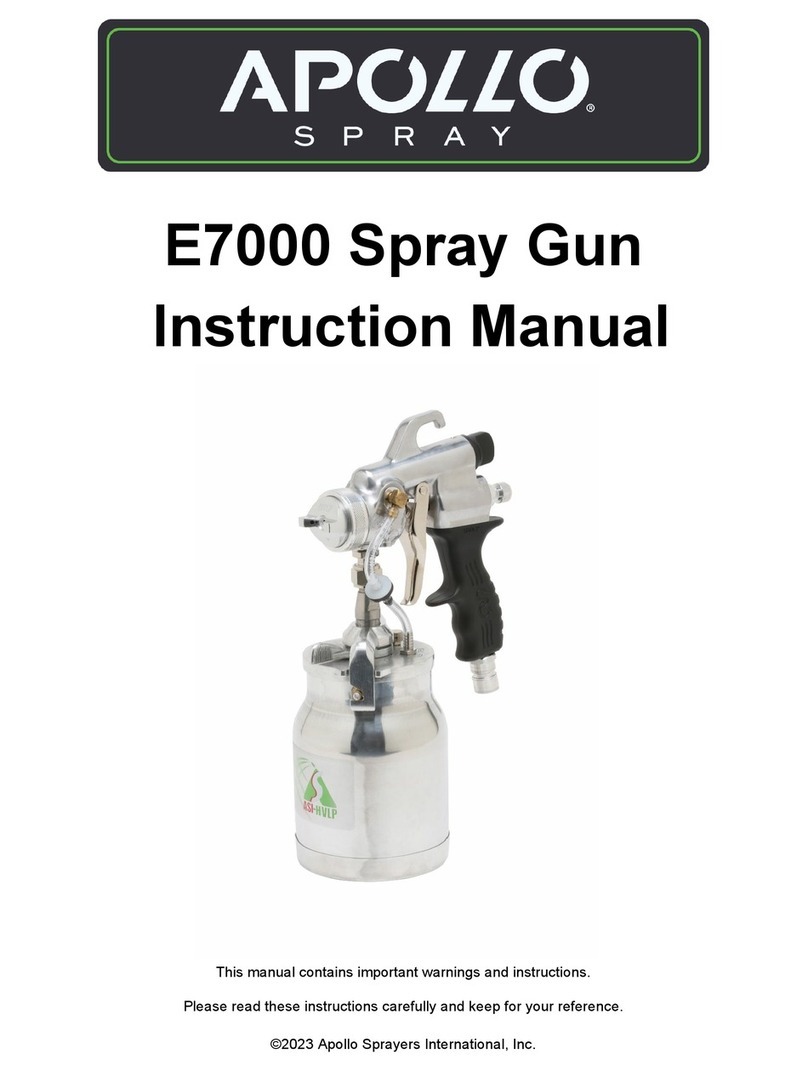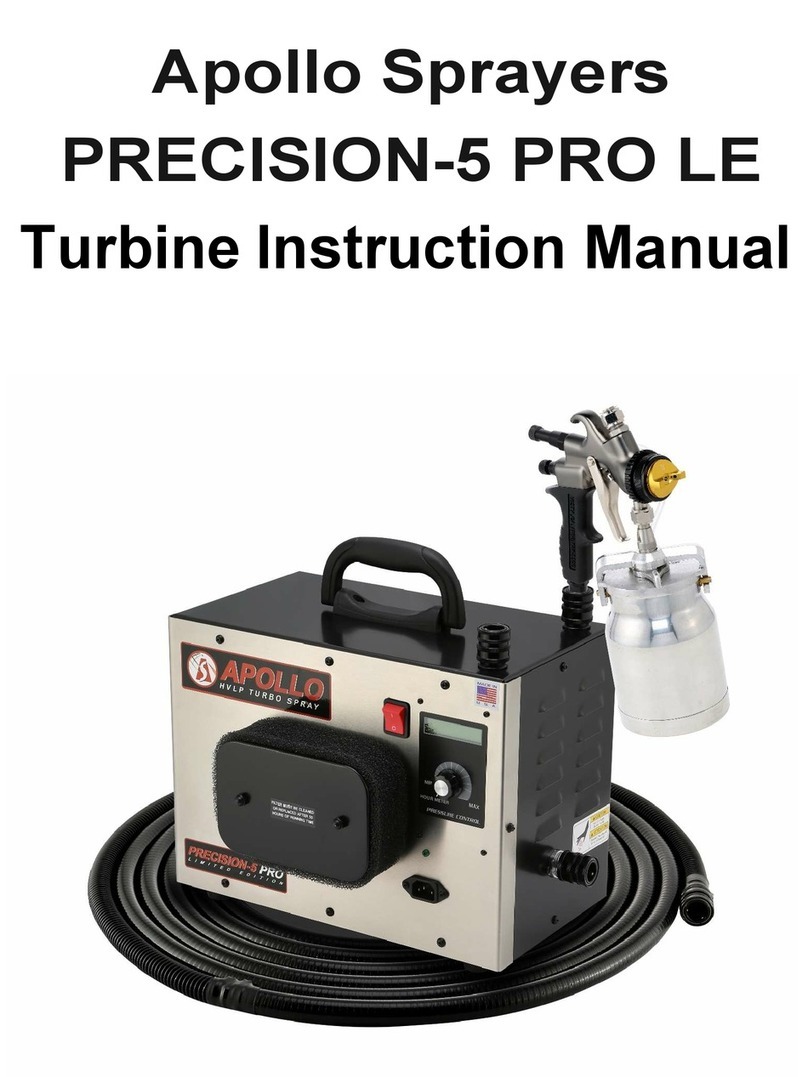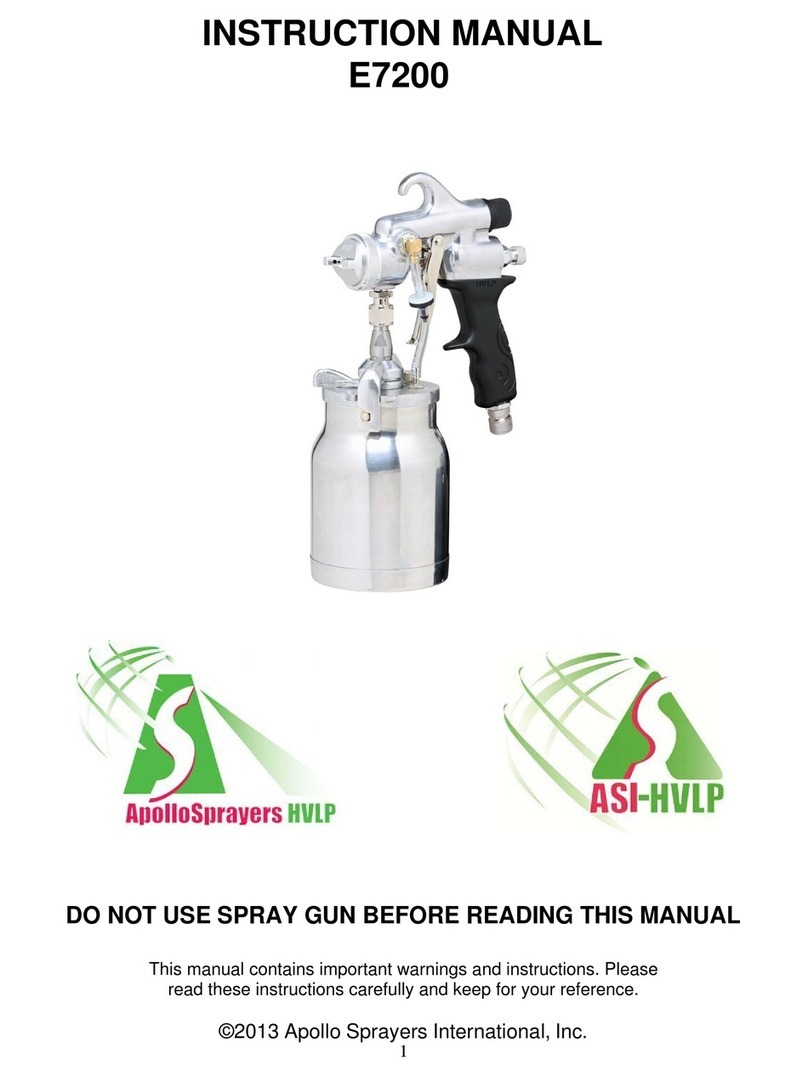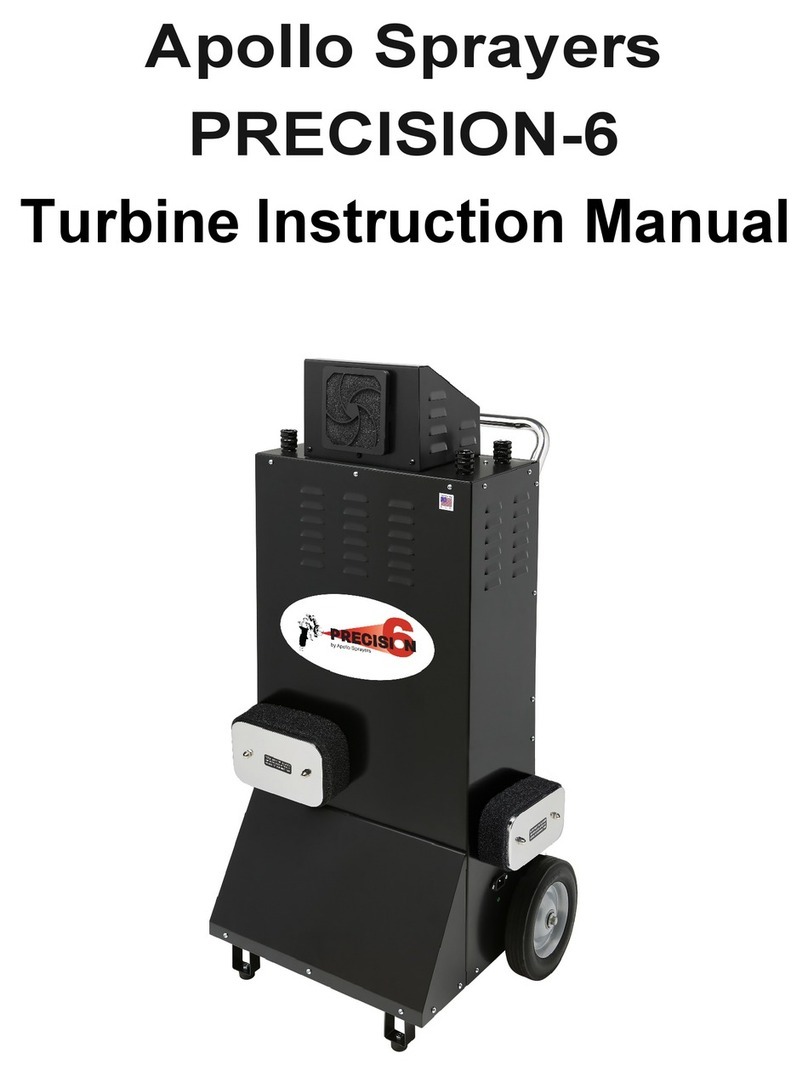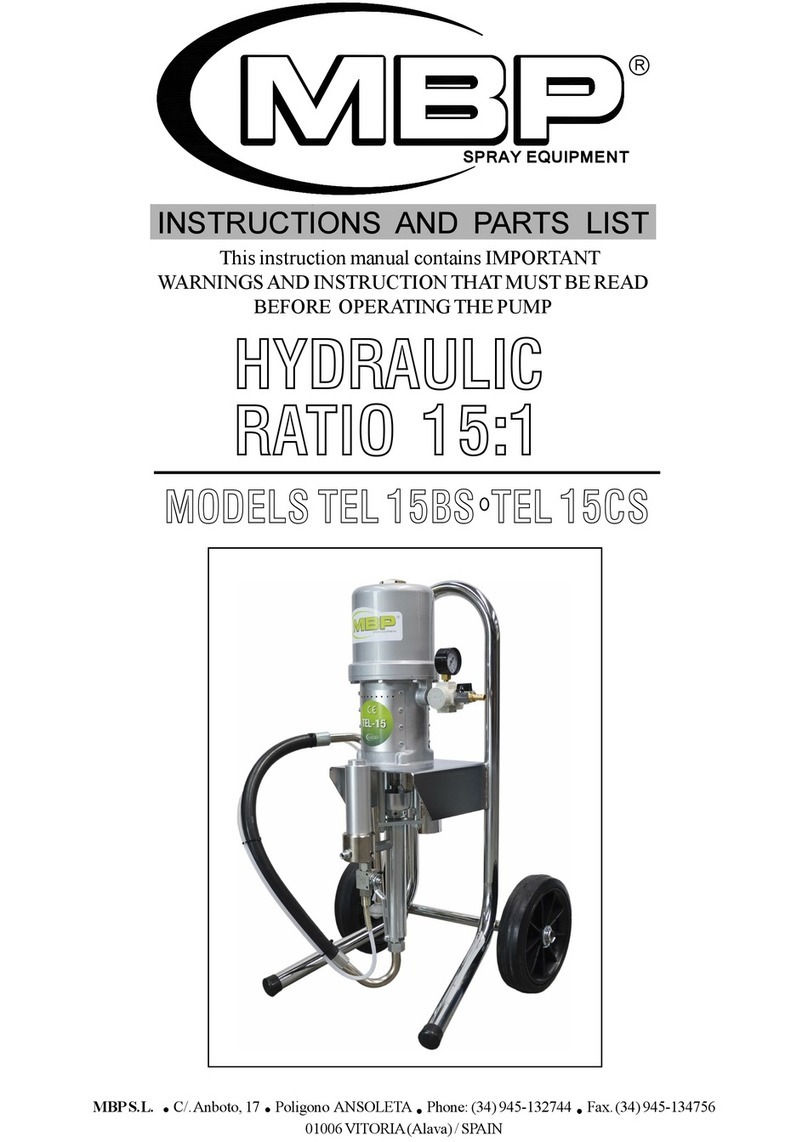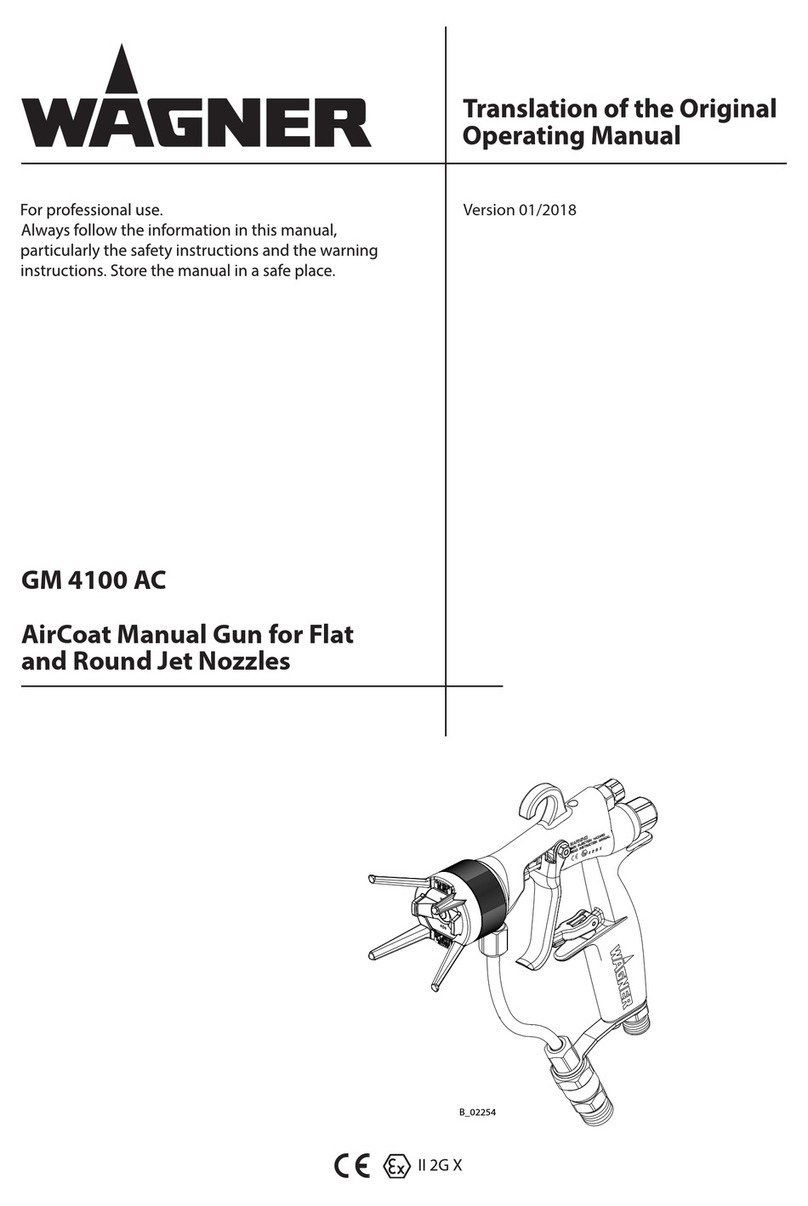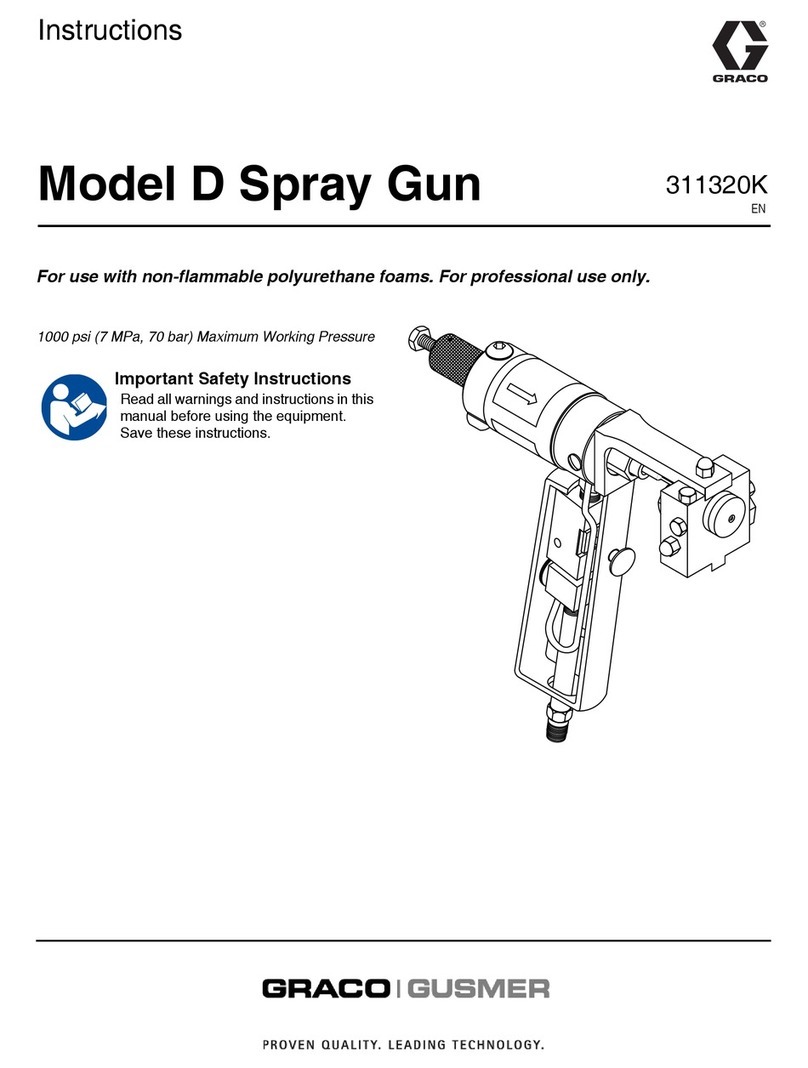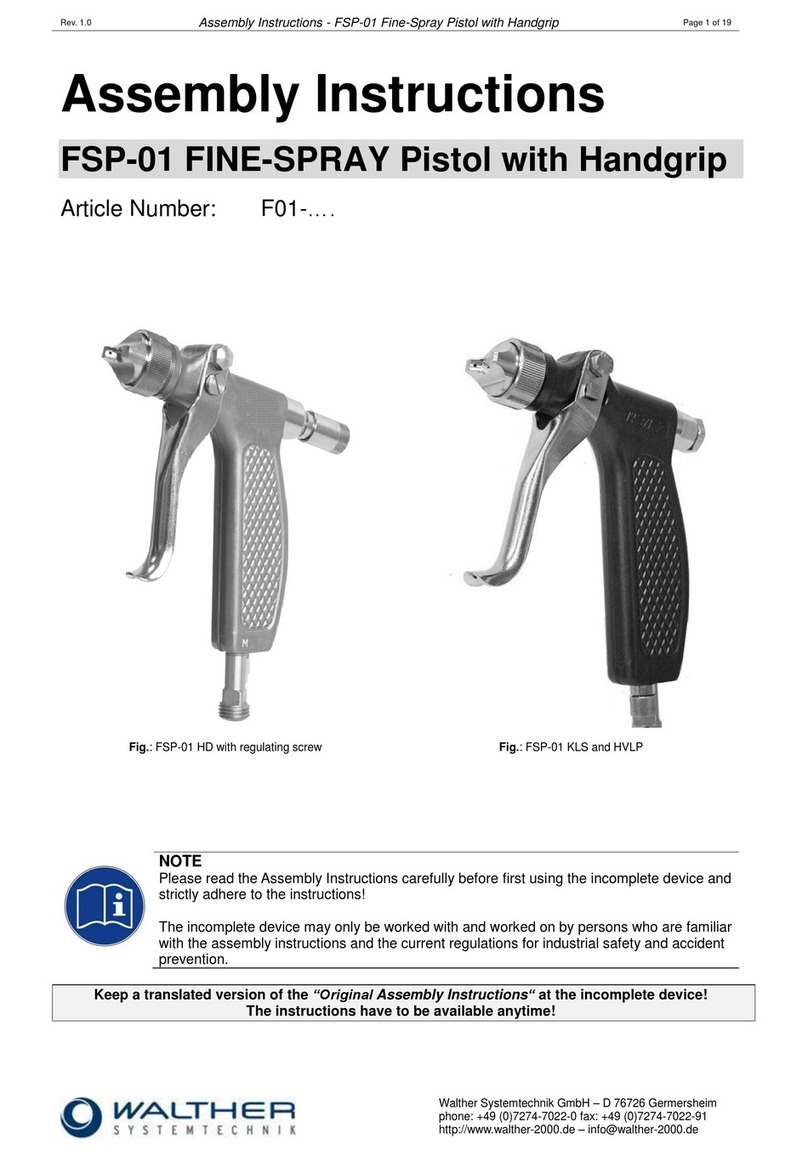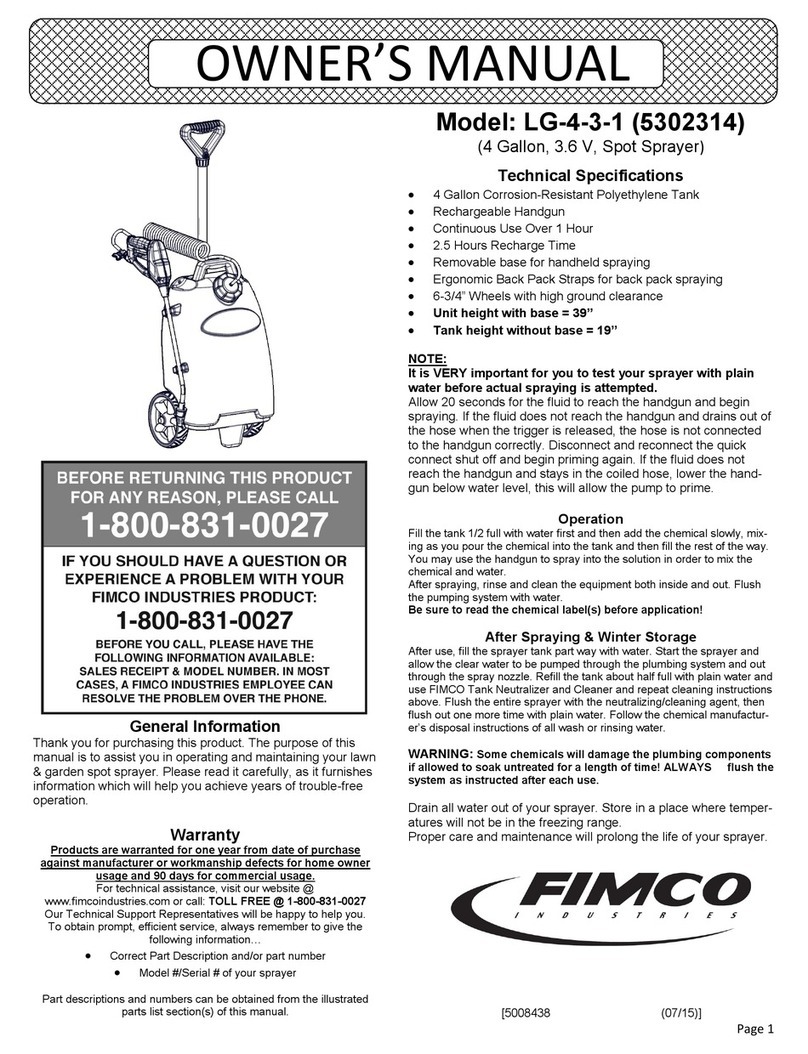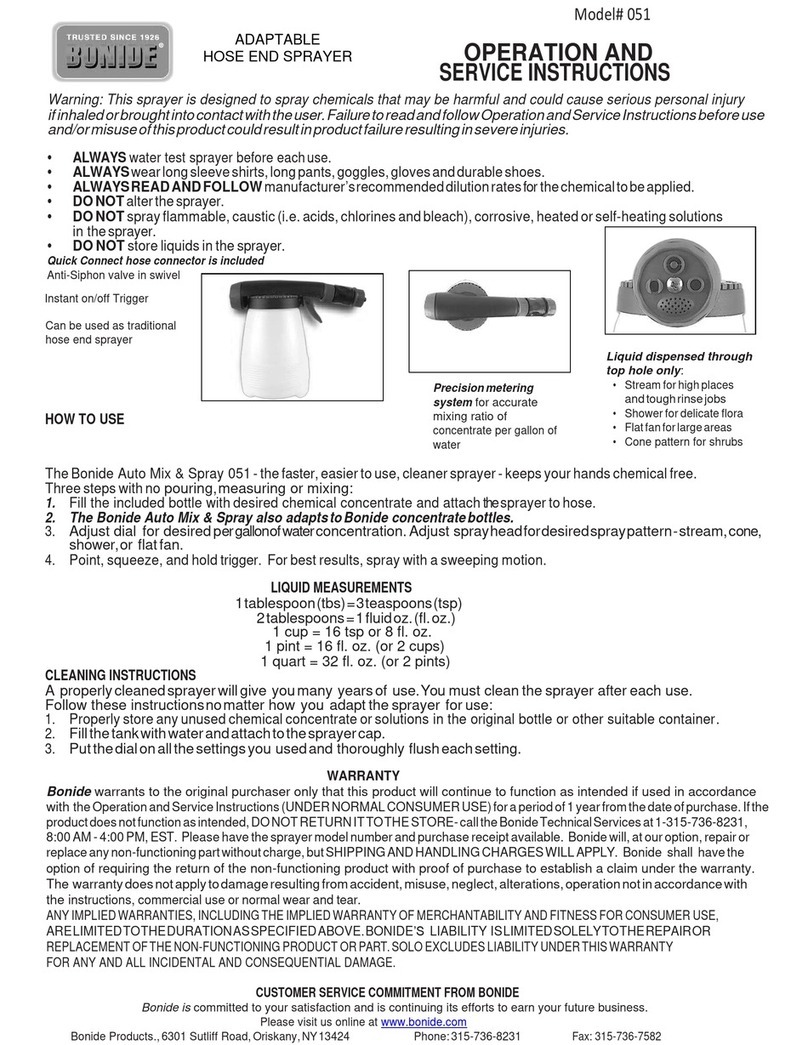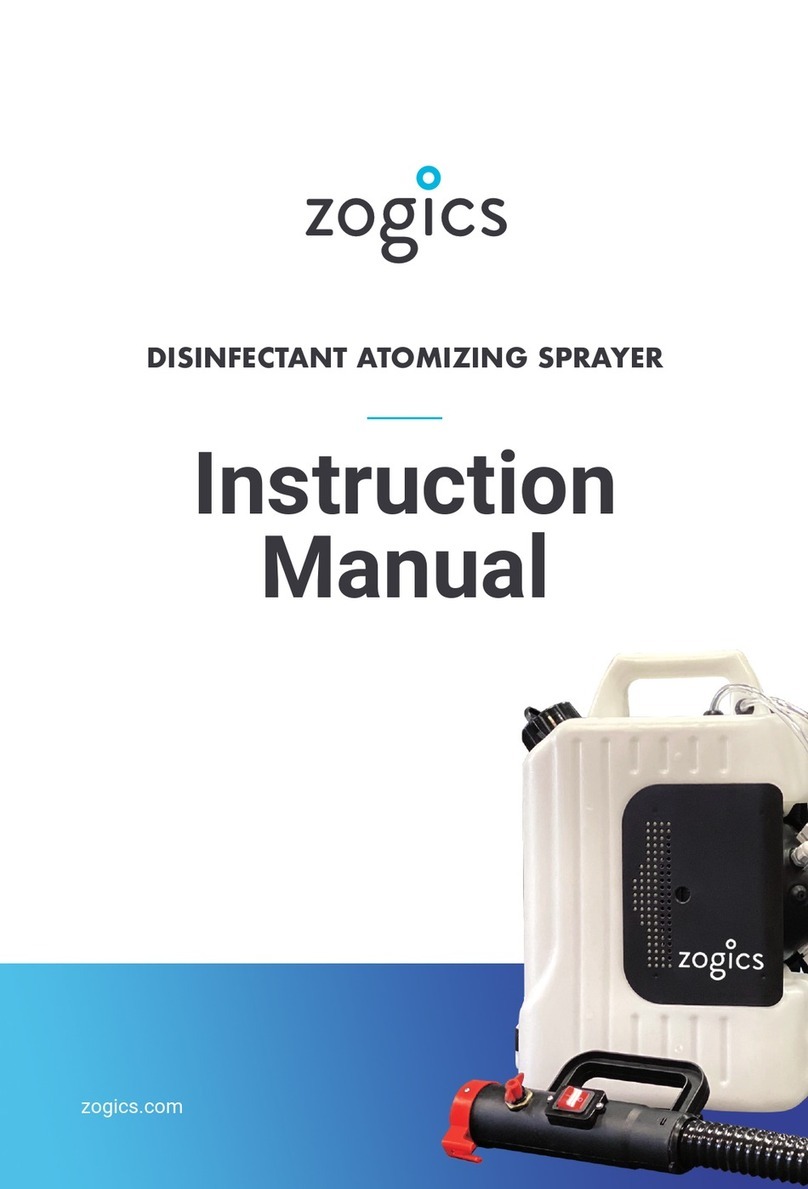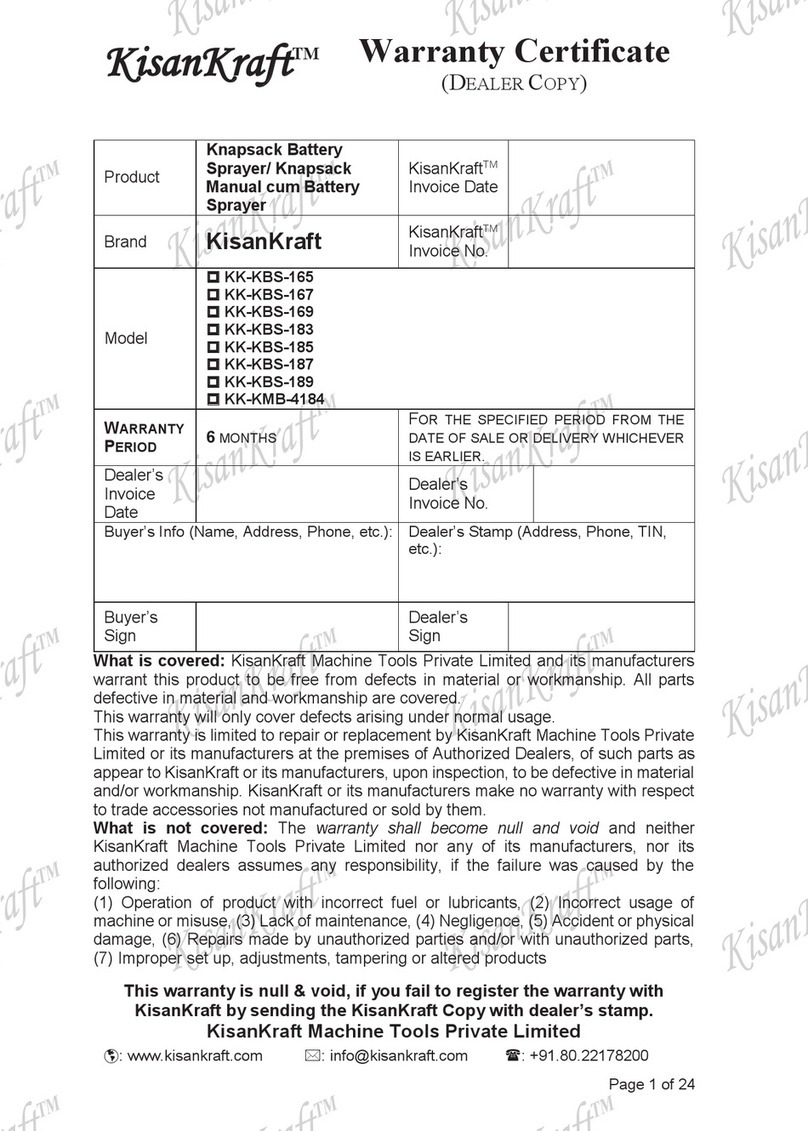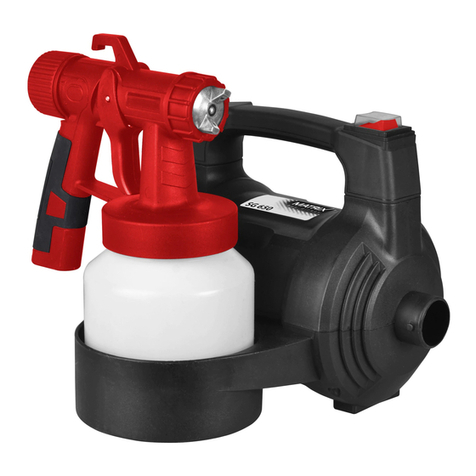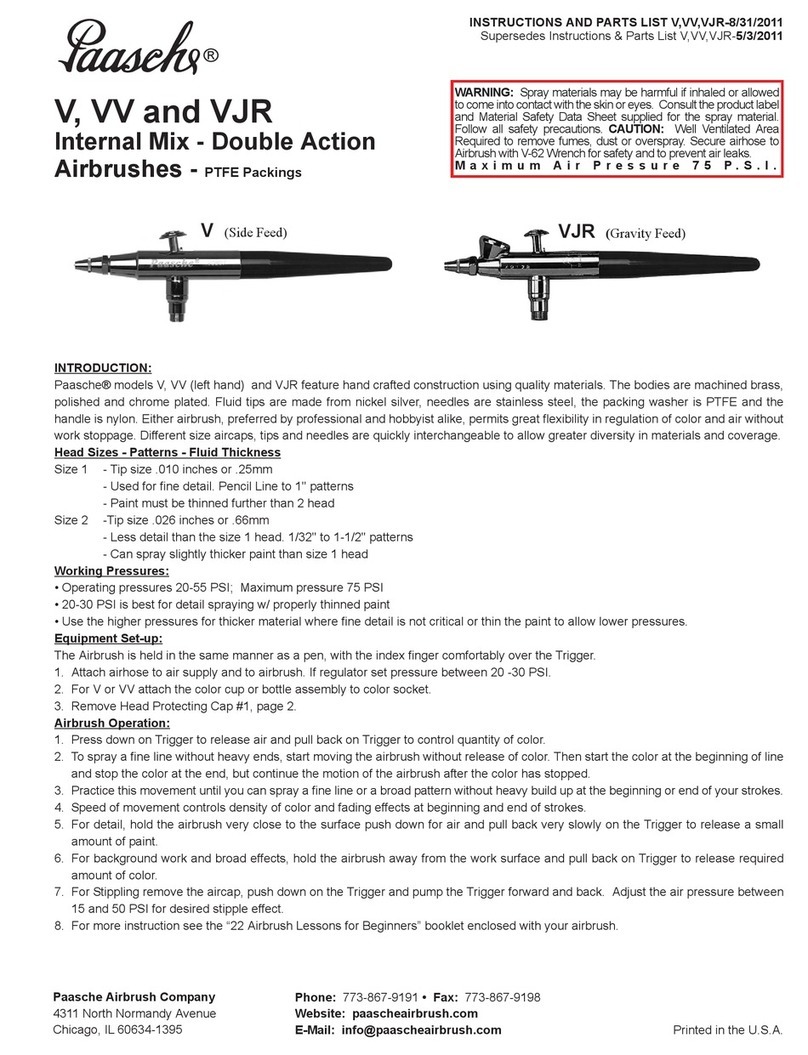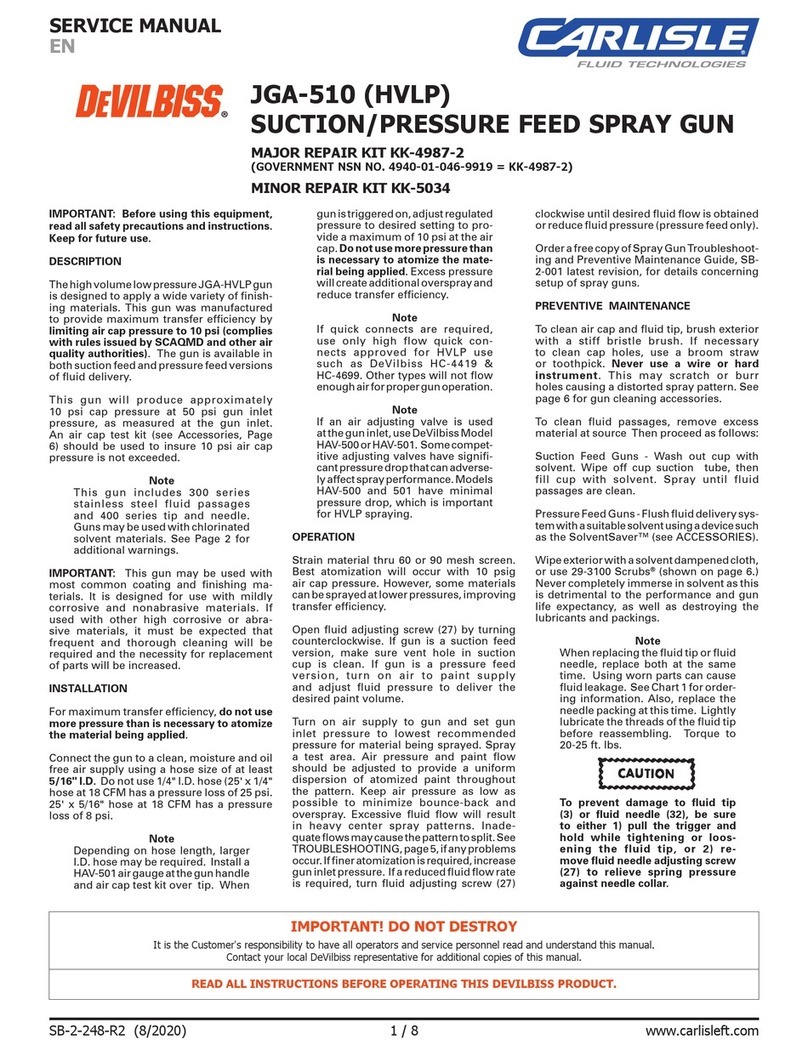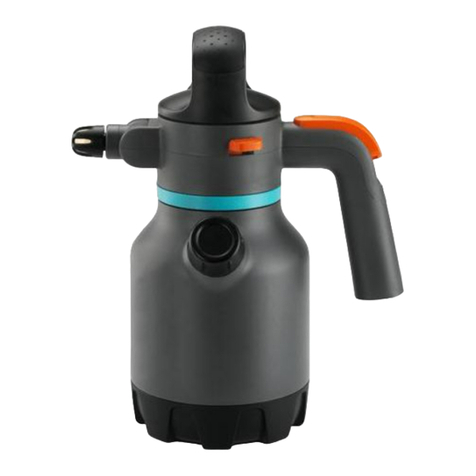
Page 7
It is important to understand the difference between static or sealed pressure vs. flow pressure. When setting the
turbine pressurefor spraying you should always set the flow pressure. You can set the flow pressure by connecting
the spray gun and turning the system on. Turn the material flow screw on the spray gun about 2 full turns counter
clockwise. Make sure you don’t have any material in the cup or that you don’t pull the
trigger back all the way. If you do, you will release the material in the cup. You
only need
to release the air pressure from the spray gun, not the material in order to set the flow
pressure. This is why it is preferable to set the pressure without any material in the cup.
Pull the trigger and release the air from the spray gun. While continuing to pull the
trigger, adjust the pressure on the turbine to the spraying pressure of your choice. Once
you have set the pressure release the trigger. The pressure will stay where you set
it.
Pull
the trigger again and watch the LCD screen. You will notice the air pressure drop
and then go back to where you set the pressure. This will work for any pressure setting.
NEVER set the turbine at full power with the spray gun closed. This will not give you any
additional spraying pressure and will only overwork and possible overheat your turbine
motor when not being used.
The control board will automatically adjust the motor speed to compensate for barometric
pressure and elevation. The pressure reading will always be accurate. To decrease the
pressure from the maximum setting simply turn the knob underneath the LCD pressure
display counter-clockwise, toward “MIN”. To increase the pressure once reduced, turn
the knob clockwise, toward “MAX”. As you turn the knob, the pressure will increase or
decrease accordingly. The scale on behind the knob is there only to indicate the
direction to increase and decrease the pressure. The scale does not represent any
settings for the air pressure.
The viscosity of the coating you want to spray will determine the amount of pressure
needed. The thicker your viscosity, the more pressure you will need to atomize your
Precision 5 with
7500QT
5-Stage Turbine
10 psi (0.70 bar) sealed*
130 cfm (3.68 cmm)
Dual air filtration
Single spray gun
110 - 120 volts, 60Hz, 15 amps,
1.85H.P.
220 - 240 volts, 50Hz, 8 amps.
1.75H.P.
Weight: 31lbs (14.1kg)
Height: 12” (30.48cm)
Width: 8.5” (21.6cm)
Length: 15” (38.1cm)
All
EU
units
shipped
All 110 volt units are tested and
certified
coating. For highest efficiency, use the lowest pressure that produces the best atomization and finish results. If
you experience “Orange Peel”, increase the pressure. If you have too much overspray, decrease the pressure.
The Precision-5 also has three additional features, a filter warning system, an hour meter and “IDLE MODE”. The filter
warning system works to help prevent overheating your motor. To prevent damage to the motor the turbine will shut itself
down if it gets too hot. Overheating can be caused by clogged or dirty filters. The more the filters are restricted the hotter
the motor will run. Once the overheat point has been reached the turbine will shut off until the temperature inside the unit
has cooled enough for the motor to once again operate normally. When this happens an “OVERHEAT” message is
displayed in the LCD screen. Do not ignore this warning. Clean or change your filters to prevent this from happening again.
The hour meter records the use of the turbine in whole hours. To see how many hours of use your turbine has, turn the
power control knob counter-clockwise until the indicator mark on the knob lines up with the line for the hour meter. The
LCD will then display the hours of use rather than the pressure. The third feature unique to your PRECISION-5 Turbo
system is the “IDLE MODE”. When your turbo system is turned on with the spray gun and hose connected and you do not
trigger the spray gun for more than 30 seconds the motor will drop into “IDLE MODE”, which is displayed in the LCD
screen. This is a safety feature built into your PRECISION-5 in order to keep the motor running cool and increase the life
expectancy. In order to take your PRECISION-5 out of “IDLE MODE” simply pull the trigger on the spray gun and the unit
will immediately return to the preset pressure you set prior to “IDLE MODE”. Normal triggering of the spray gun during a
pass will prevent the turbo system from entering “IDLE MODE”. *All turbine pressures quoted are measured sealed and at
the motor outlet. Actual spraying pressures will vary depending on the model and size of the turbine.
4 Know Your Coatings
4.1 Coating Properties
Coatings are a blend of resins and additives to create a product that will provide a protective and beautifying surface to
your work piece. Different resins have different properties. It is important to use the correct coating to achieve a desired
result. Manufacturers of coatings can control the resin solids content, production viscosity, sheen, color, flow-out
enhancement and other properties. Some products offer ways to adjust the coating properties such as speeding up or
slowing down the drying time, adding catalysts to strengthen the molecular bond or adding flatting agents to lower the
sheen. Manufacturers will often give some guidelines on how to thin their product for spray application. There are many
different types of spray equipment in use. Coatings manufacturers cannot address all of them. It is important for the
finisher to understand the spray equipment and to use commonsense to arrive at the correct fluid viscosityto produce the
best possible results with the selected coating and the equipment being used.
